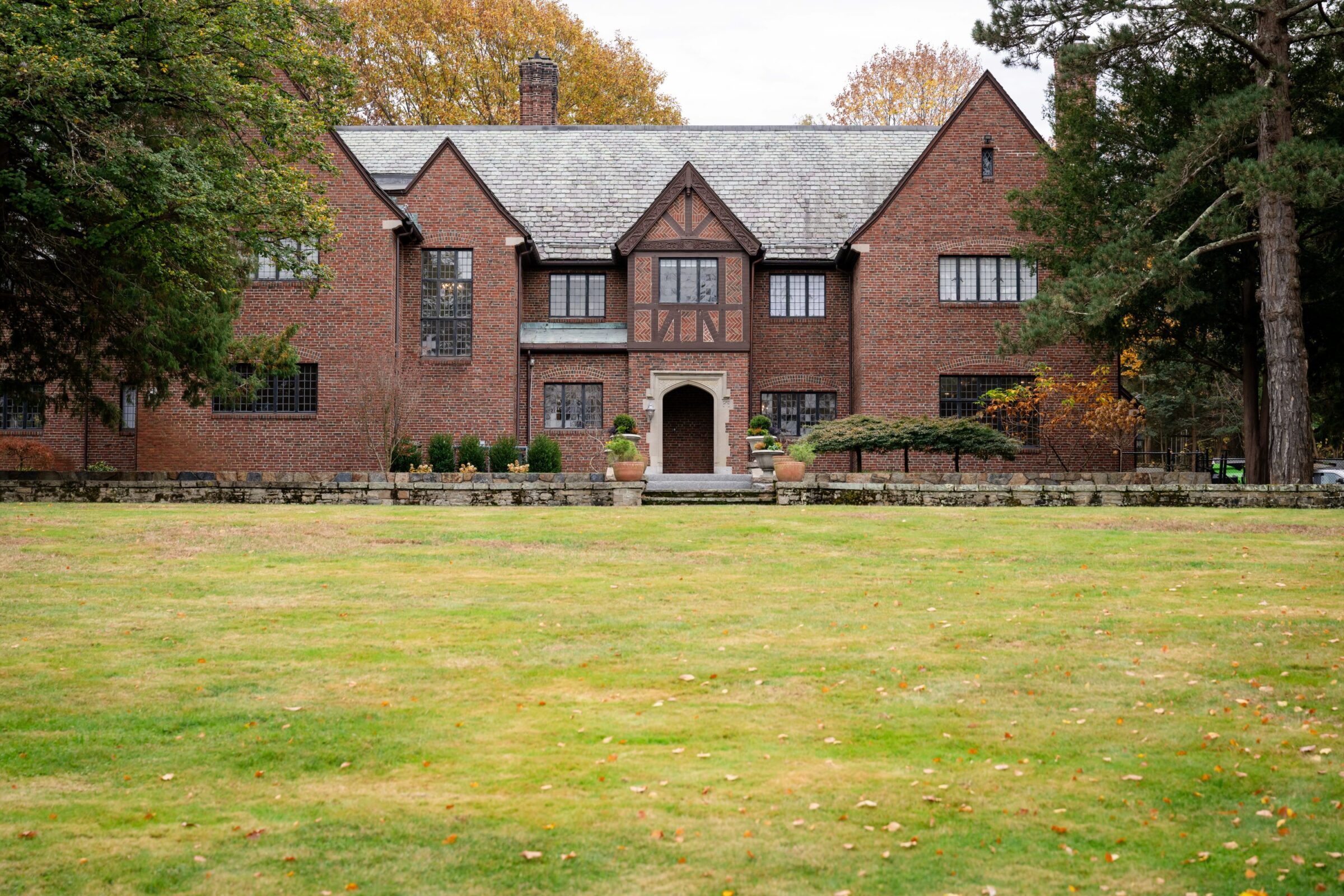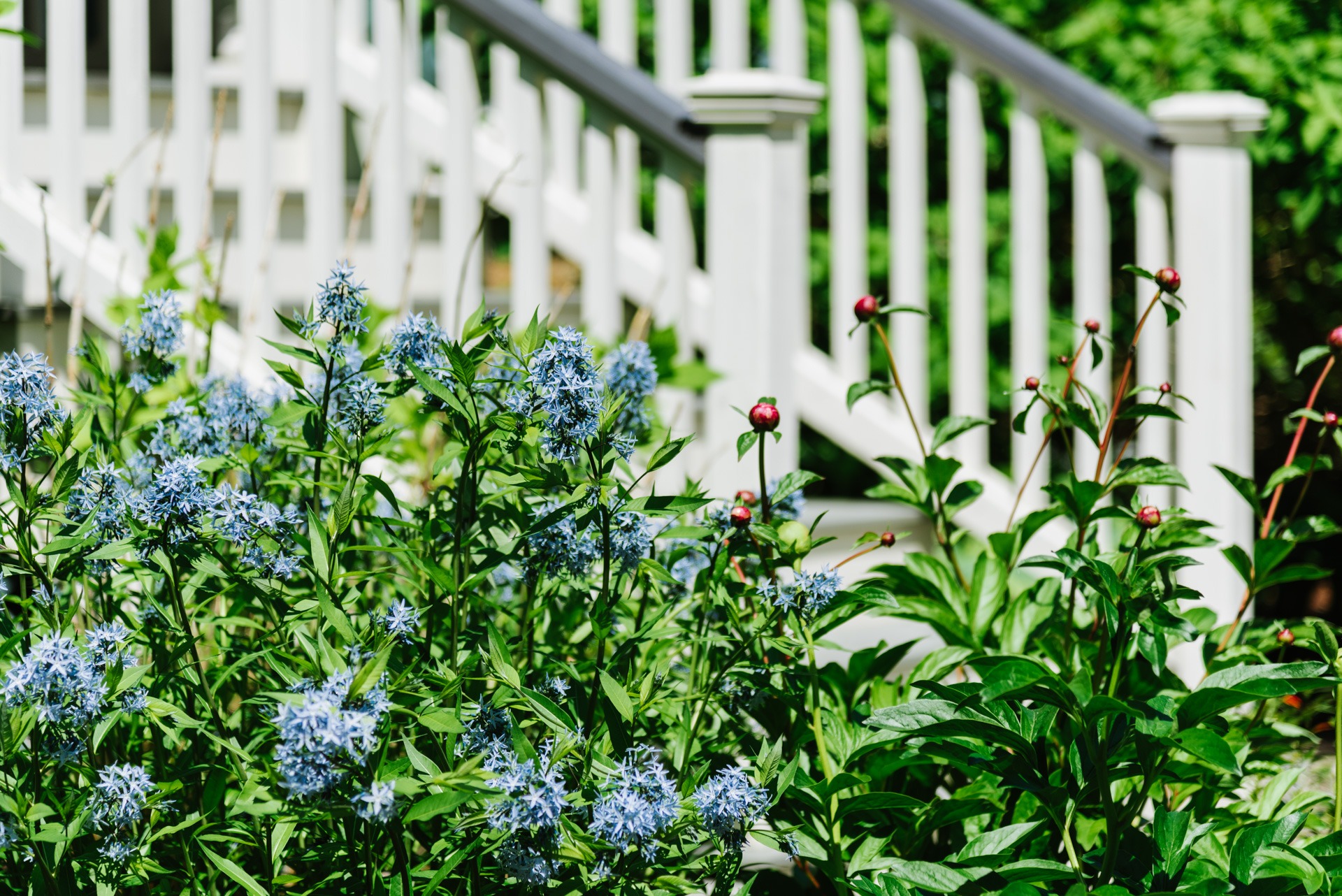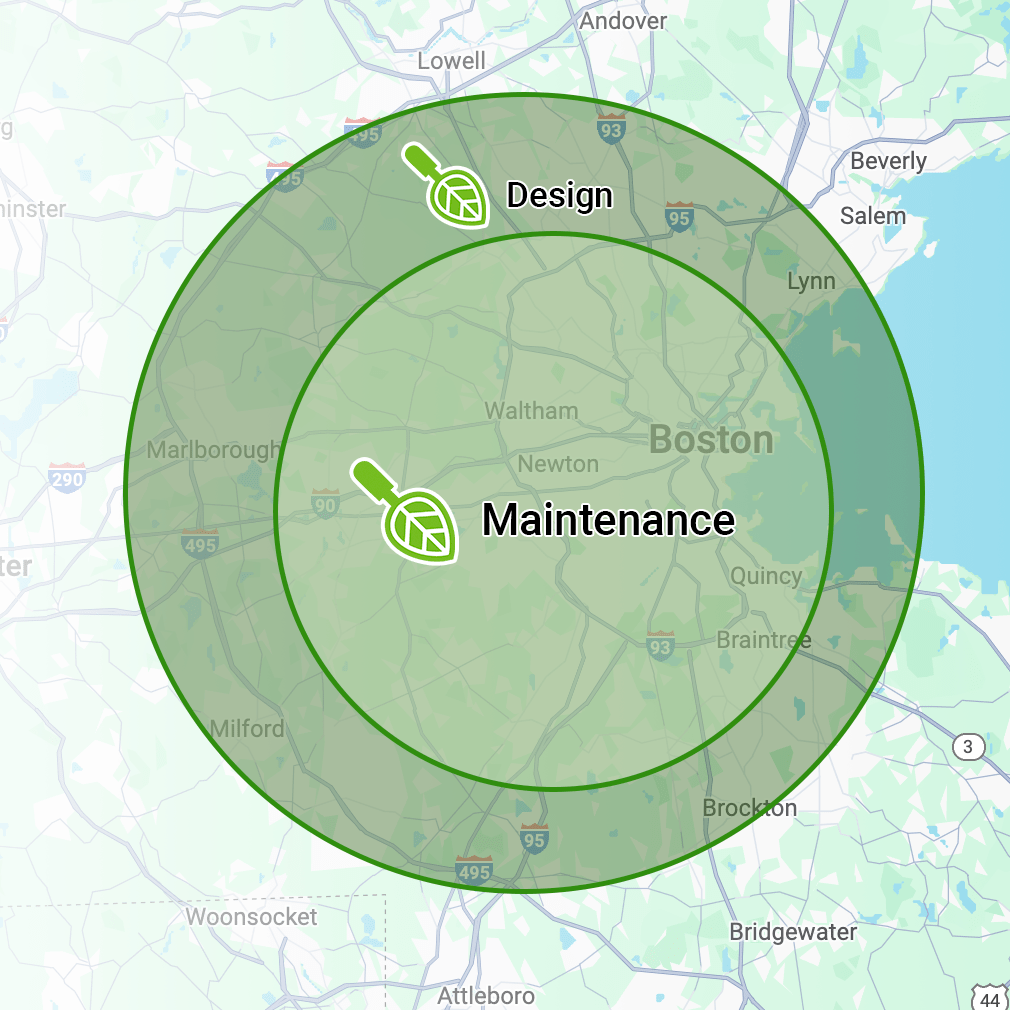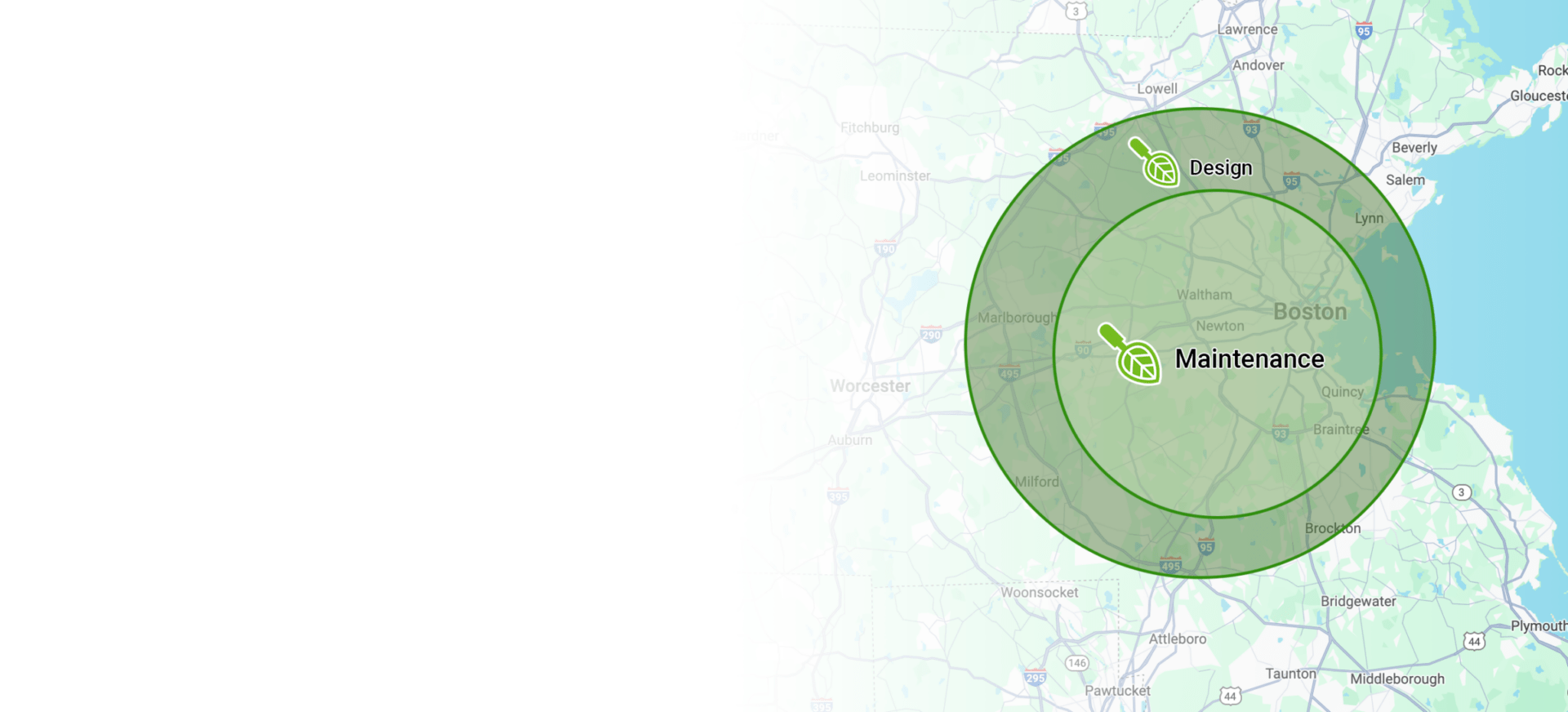Residential Landscape Maintenance in Charlestown, MA
Keep Your Outdoor Space Looking Its Best Year-Round


Hassle-Free Landscape Maintenance for Your Home
Your outdoor space deserves regular care to stay healthy and inviting. An unmaintained landscape can lead to overgrown shrubs, patchy grass, and unwanted weeds, making your home feel less welcoming. If past landscapers have let you down or maintenance has become overwhelming, it’s time for a solution that works.
With GreenOp Landscape’s residential landscape maintenance in Charlestown, MA, you get expert care that keeps your property looking polished without the hassle. From weekly mowing and precise pruning to seasonal clean-ups, everything is planned and handled for you—so you never have to worry.
Residential Landscape Maintenance Services in Charlestown, MA
Our residential landscape maintenance services cover everything from routine upkeep to specialized care, ensuring your property stays healthy, vibrant, and beautiful year-round. Need something specific? We offer customized solutions tailored to your landscape’s unique needs. Whether it’s on the list below or something more specialized, if your landscape needs it—we can handle it.
Essential Maintenance Included in All Plans
Seasonal Cleanups
Prepare your property for changing seasons with debris removal and essential care.
Weeding & Mulching
Keep garden beds tidy and nourished with professional weeding and mulch application.
Pruning & Trimming
Maintain the health and appearance of shrubs, hedges, and trees with precise trimming.
Weekly Mowing
A consistent mowing schedule ensures a lush, even, and vibrant lawn all season long.
Property Walkthroughs
Maintain the health and appearance of shrubs, hedges, and trees with precise trimming.
Expert Guidance
Receive professional insights and expert recommendations to keep your yard thriving.
Optional Additions for Residential Maintenance Plans
Fertilization & Soil Health
Nutrient-rich soil and expert fertilization keep your landscape lush, healthy, and thriving.
Irrigation System Management
Keep your lawn and plants thriving with precise, custom watering schedules.
Plant Health Monitoring
Regular check-ups ensure your trees, shrubs, and flowers stay healthy, and pest-free.
Specialty Pruning
Expert care for ornamental trees and shrubs to enhance beauty, shape, and long-term growth.
Annuals Planting
Add vibrant, seasonal color to your landscape with fresh, expertly chosen and carefully planted annuals.
Bulb Planting
Plant today, bloom tomorrow—enjoy stunning seasonal flowers with perfectly timed bulb planting.
Lawn Aeration & Overseeding
Thicker, healthier grass starts here. Reduce compaction and improve soil & growth.
Organic Lawn Care
A greener, chemical-free approach to lush, resilient turf that’s safe for people and pets.

“Our condo association has been thrilled with their work”
“GreenOp has done a terrific job from the very beginning. Josh was very patient and responsive to our questions while we were deciding to hire them for landscape maintenance of our Condo Association property. Everyone in our 8-unit townhouse condo association has been thrilled with their work. They also alert you the day before they visit in case cars may need to be moved. Overall, we have been very happy as they have a very reasonable price and exceptional service.”
“They genuinely care about their employees and their customers”
“I’ve worked with Josh at Green Ops for the last few years. They treat their employees well and genuinely care about their employees and their customers. If you’re looking for an awesome landscaping service in the greater Boston area, start with these guys.”
“I was truly amazed”
“GreenOp came in and rectified my little jungle I had surrounding my home. I worked a lot, and it became increasingly difficult for me to control. I called for a quote and met with Chris, and the rest was history. GreenOp came in, and puff, did their magic, & maintained the landscaping post. I was truly amazed. I will definitely recommend and maintain a working relationship onwards.”
“A breath of fresh air for first-time homeowners”
“As a first-time homeowner, vetting and hiring contractors is definitely the most stressful part of the process! GreenOp is a breath of fresh air. I’ve used Josh and his crew at GreenOp for a few different projects and just hired them again to finish the design and landscaping of our backyard. Josh is responsive to questions and respectful of budgets, and his crew is professional, quick, and tidy. We’ve been really happy with the quality of work – after our first project with GreenOp, multiple neighbors came over to compliment us!”
“They consistently exceed expectations”
“I’ve had the pleasure of working with GreenOp on multiple occasions, and they consistently exceed expectations. Their attention to detail is unmatched, ensuring that every project is executed with precision and care. Communication is always clear and timely, making collaboration smooth and efficient. The project management team at GreenOp stands out for their exceptional organizational skills and commitment to excellence. Their dedication to delivering top-notch results makes them a standout choice in the industry. I highly recommend GreenOp with a 5/5 rating!”

Why Choose GreenOp Landscape?
A well-maintained landscape should be effortless. Here’s how GreenOp Landscape makes it happen:
- Reliable & Professional – A trusted team that shows up and delivers expert care.
- Clear Communication – All details are managed in one system for easy updates.
- Hands-Off Maintenance – Every service is planned so you don’t have to think about it.
- Streamlined Invoicing – Simple and professional billing for a stress-free experience.

Serving Milton, MA & Surrounding Areas
- Auburndale
- Bedford
- Belmont
- Boston
- Brookline
- Duxbury
- Lexington
- Lincoln
- Medfield
- Natick
- Needham
- Newton
- Sherborn
- Southborough
- Sudbury
- Waban
- Wayland
- Wellesley
- Weston

Common Signs of Pests and Disease Identified by a Landscape Contractor in Charlestown, MA
Regular observation is key to identifying problems early. Look out for:
– Discoloration: Yellowing or browning of leaves may indicate insect infestations or nutrient deficiencies.
– Wilting: Plants may wilt due to pests feeding on roots or stems.
– Chewed Foliage: Holes in leaves or missing sections might point to caterpillars, beetles, or other pests.
– Powdery Residue: A white powdery appearance on leaves may be caused by fungal diseases like powdery mildew.
– Sticky Substances: Honeydew from aphids or scale insects often coats plant surfaces, attracting mold growth.
Integrated Pest Management (IPM) Practices with Landscaping Services in Charlestown, MA
- Choose pest-resistant plant varieties suitable for your region’s climate.
- Maintain proper soil health through regular aeration, composting, and mulching.
- Avoid overwatering, as excessive moisture encourages fungal growth.
- Inspect plants weekly for early signs of pests or diseases.
- Use sticky traps or pheromone traps to monitor insect populations.
- Rotate crops in vegetable gardens annually to disrupt pest life cycles.
- Prune infected branches promptly to prevent the spread of disease.
- Introduce beneficial insects such as ladybugs or lacewings that prey on harmful pests.
- Use nematodes to target soil-dwelling pests like grubs.
- Chemical Controls (when necessary):
If natural methods are insufficient, apply pesticides judiciously based on specific pest identification. Always follow safety guidelines and choose products with minimal environmental impact.
Best Practices for Disease Control in Landscape in Charlestown, MA
To reduce the occurrence of diseases:
– Practice proper spacing during planting to improve air circulation around foliage. – Water plants at the base early in the morning rather than overhead watering that wets leaves. – Remove fallen debris where fungal spores or bacteria could thrive.
| Problem | Cause | Solution |
| Leaf Discoloration | Nutrient Deficiency/Pests | Test soil; apply fertilizers |
| Root Rot | Overwatering | Improve drainage; reduce watering frequency |
| Wilting Plants | Insect Damage | Inspect roots; use targeted treatments |
By combining observation with strategic interventions, you can protect landscapes from severe damage caused by pests and diseases while fostering long-term plant health.
Grub & Insect Treatments
Grubs and insects can wreak havoc on a well-maintained landscape if not properly managed. These pests not only damage plant roots, leaves, and stems but can also attract other wildlife that may further disrupt the balance of your outdoor space. Effective treatments are essential to protect your lawn, shrubs, and plants from infestations. Below, we outline methods and best practices for managing grub and insect issues in your landscape.
Identifying Grubs and Insects in Your Landscape Design in Charlestown, MA
- Brown patches on lawns: Often caused by grubs feeding on grass roots.
- Chewed leaves or holes: Indicating caterpillars, beetles, or other leaf-eating insects.
- Yellowing plants: A potential sign of sap-sucking insects like aphids.
- Mounds of dirt: Evidence of burrowing insects or animals attracted by grubs.
Conduct regular inspections to monitor early signs of pest activity and take immediate action when problems are detected.
Treatment Options for Grubs with Landscaping Companies Near Me
- Microscopic organisms that naturally attack grub larvae in soil.
- Safe for pets, plants, and humans.
- Targets Japanese beetle grubs effectively.
- Once applied, it can remain active in the soil for years.
- Products containing imidacloprid or chlorantraniliprole are highly effective against grubs but should be used with caution to avoid harming beneficial insects.
| Treatment Type | Effectiveness | Environmental Impact |
| Beneficial Nematodes | High | Low |
| Milky Spore Powder | Moderate | Low |
| Chemical Insecticides | Very High | Moderate/High |
Managing Other Insects
- Use horticultural oils or insecticidal soaps as gentle yet effective control options.
- Introduce natural predators like ladybugs or lacewings to reduce insect populations naturally.
- Avoid over-fertilizing plants as excessive nitrogen encourages soft growth that attracts pests.
Preventative Measures
- Maintain healthy soil with regular fertilization and aeration.
- Remove dead plant material or thatch where pests often hide and breed.
- Water deeply but less frequently to discourage moist environments that promote insect activity.
By staying vigilant with inspection routines and using appropriate treatments tailored to the specific pests in question, you can ensure a thriving landscape free from the damage caused by grubs and harmful insects.
Grub & Insect Treatments
Effective management of grubs and insects is a critical part of maintaining a healthy and vibrant landscape. Left unchecked, these pests can cause significant damage to lawns, plants, and ornamental trees. Understanding the life cycle of common insects and selecting the right treatments ensures that your landscape remains lush while minimizing harm to beneficial organisms.
Identifying Common Grub & Insect Issues
- Brown or dead patches in lawns: Often caused by white grubs feeding on grassroots.
- Chewed leaves or discolored foliage: Indicates beetles or caterpillars may be present.
- Wilting or stunted growth: Can point to sap-sucking insects like aphids or mealybugs.
Conducting regular inspections helps detect pests early before they become widespread.
Treatment Options for Grubs
- Aerate the soil regularly to disrupt grub habitats.
- Ensure proper irrigation, as overly moist soil can attract egg-laying adult beetles.
- Introduce beneficial nematodes (Heterorhabditis bacteriophora), microscopic organisms that naturally control grub populations.
- Use milky spore powder, which targets certain species like Japanese beetle larvae without harming other organisms.
- Apply insecticides containing active ingredients such as imidacloprid or chlorantraniliprole during late summer when grubs are most active near the surface.
- Always read labels carefully and follow application instructions to reduce environmental impact.
| Treatment Type | Advantages | Limitations |
| Cultural Methods | Environmentally safe; cost-effective | May require time for results |
| Biological Solutions | Targeted; friendly to beneficial bugs | May not address all grub species |
| Chemical Treatments | Fast-acting | Potential risk to pollinators if misused |
Managing Other Landscape Insects
- Natural Remedies: Neem oil sprays and insecticidal soaps are effective against soft-bodied pests while being safe for humans and pets.
- Introduction of Predatory Insects: Ladybugs and lacewings naturally control aphids and mites without requiring chemical intervention.
- Systemic Insecticides: For severe infestations threatening valuable plants or trees, systemic treatments provide long-lasting protection by delivering chemicals directly through plant tissues.
Preventative Measures
- Maintain healthy soil conditions with organic composts to enhance plant resilience.
- Mow grass at recommended heights—short grass makes it harder for adult insects like beetles to find suitable egg-laying sites.
- Avoid overwatering plants as moist environments can attract pests like fungus gnats.
By staying proactive with pest monitoring and effective treatment methods tailored to specific insect problems, you can protect your landscape from unnecessary damage while promoting a balanced ecosystem.
Lawn & Plant Health Inspections
Regular lawn and plant health inspections are fundamental to maintaining a thriving and visually appealing landscape. These inspections help identify early signs of deterioration, diseases, or pest activity that could jeopardize the overall health of your outdoor space. A proactive approach ensures that small issues are addressed before they escalate into larger, more costly problems.
Importance of Lawn & Plant Health Inspections
Routine evaluations provide several essential benefits, including:
– Early Detection: Identifying issues such as nutrient deficiencies, pest infestations, or fungal diseases before they worsen.
– Improved Growth: Ensuring plants are receiving adequate water, sunlight, and nutrients for optimal growth.
– Cost Savings: Preventing expensive treatments by addressing problems while they’re still manageable.
– Aesthetic Appeal: Maintaining the vibrant and lush appearance of your lawn and garden.
Key Inspection Areas
- Check for compaction or dryness.
- Test pH levels to ensure proper nutrient absorption.
- Inspect for signs of erosion or poor drainage.
- Look for discoloration in leaves (e.g., yellowing or browning).
- Assess stems and branches for signs of wilting or breakage.
- Inspect flowers for irregular growth patterns.
- Identify holes in leaves or other indications of chewing pests like grubs or beetles.
- Look for insects at the base of plants or beneath leaves.
- Check soil surfaces for burrowing pests.
- Identify moldy patches on grass blades (potential fungal growth).
- Watch out for black spots on leaves that may indicate bacterial infections.
- Look for stunted growth caused by root rot.
- Grass Health (For Lawns)
Use these indicators to assess overall grass conditions:
| Symptom | Potential Cause | Solution |
| Patchy spots | Grubs, drought stress | Aerate soil; treat pests |
| Discoloration | Nutrient deficiency | Fertilize with balanced mix |
| Mushy patches | Overwatering | Adjust irrigation schedule |
Steps to Perform Effective Inspections
- Schedule inspections biweekly during growing seasons and monthly during dormant periods.
- Walk through your entire yard systematically without skipping sections.
- Utilize tools like a soil probe, magnifying glass (for pests), and moisture sensors if needed.
- Keep detailed records after each inspection – note any changes in plant appearance, soil conditions, or pest sightings over time.
Professional Assistance
While homeowners can perform basic assessments themselves, hiring a professional landscaper ensures a more comprehensive evaluation using specialized tools and expertise. Professionals can also recommend tailored solutions like fertilization programs or targeted pest control measures based on their findings.
Conducting regular lawn and plant health inspections is key to fostering a lush outdoor environment that you can enjoy throughout the year while reducing long-term risks associated with neglecting maintenance tasks altogether.
Lawn & Plant Health Inspections
Regular lawn and plant health inspections are a critical component of effective landscape maintenance. These inspections help identify potential problems early, allowing for timely intervention to preserve the health and appearance of your outdoor spaces. A proactive approach ensures that your plants thrive while minimizing costly repairs or replacements.
Why Are Lawn & Plant Inspections Important?
- Early Detection: Inspections allow you to spot issues such as discoloration, pest infestations, or signs of disease before they escalate.
- Cost Efficiency: Addressing minor problems early prevents them from becoming more severe and expensive to fix.
- Improved Aesthetic Appeal: Healthy lawns and plants enhance the overall beauty of your landscape.
- Environmental Protection: Detecting problems early reduces the need for heavy chemical treatments, supporting eco-friendly practices.
Key Areas to Examine During Inspections
- Soil Health: Check for signs of compaction, poor drainage, or nutrient deficiencies. Healthy soil is the foundation for vibrant plant growth.
- Leaf Condition: Look for discoloration, wilting, or spots on leaves that may indicate pests or diseases.
- Root Development: Weak root systems can result in poor plant health. Signs such as exposed roots or stunted growth warrant investigation.
- Grass Coverage: Inspect lawns for bald patches, thinning areas, or discoloration that might signal pests, fungal infections, or improper care practices.
Tools & Techniques for Effective Inspections
- Magnifying glass: To closely examine leaves and stems for pests and eggs.
- Soil probe: For evaluating soil compaction and moisture levels.
- pH test kits: To determine if your soil has the appropriate pH balance for specific plants.
- Disease testing kits: To detect fungal pathogens affecting your lawn and garden.
- Mobile apps with plant disease identification features can speed up diagnosis by analyzing images of affected areas.
Signs Your Lawn & Plants May Need Attention
| Problem | Possible Cause | Suggested Action |
| Yellowing Grass | Nutrient deficiency | Apply fertilizer based on soil test results |
| Chewed Leaves | Pest infestation | Use targeted pest control methods |
| Brown Patches | Overwatering/fungal issue | Reduce watering; apply fungicide if needed |
| Stunted Growth | Poor root development | Aerate soil; check planting depth |
Building a Routine Inspection Schedule
- Weekly checks during growing seasons (spring and summer) to monitor rapid changes.
- Bi-weekly inspections in fall when weather conditions fluctuate significantly.
- Monthly checks during winter to ensure no dormant issues are overlooked.
By maintaining regular inspections paired with appropriate treatments when necessary, you can create a thriving outdoor environment that remains healthy year-round while protecting against future issues.
Lawn & Plant Health Inspections
Regular lawn and plant health inspections are essential for maintaining a vibrant, thriving landscape. These inspections help identify potential problems before they escalate, ensuring your plants, grass, and shrubs remain healthy and well-maintained throughout the year.
Why Are Health Inspections Important?
- Early Detection of Issues: Spot pests, diseases, or nutrient deficiencies early.
- Cost Savings: Prevent expensive treatments or plant replacements by addressing small issues proactively.
- Improved Growth: Promote stronger growth by providing the right nutrients and care based on identified needs.
- Environmental Stewardship: Reduce chemical use through targeted applications based on inspection findings.
By identifying problems early, you can take action to minimize damage and restore balance to your landscape.
Steps for Effective Lawn & Plant Health Inspections
- Look for any discoloration in leaves or grass.
- Check for signs of pest activity like chewed leaves or fine webbing.
- Inspect stems, branches, and trunks for cracks or fungal growth.
- Test the soil’s pH level to ensure it’s suitable for your plants.
- Check moisture levels to avoid overwatering or drought stress.
- Many pests and diseases hide under foliage; check these areas carefully.
- Look for bare patches in the lawn that may indicate grub damage or fungal issues.
- Examine root structure if turf appears weak.
- During transitions between seasons, pay attention to how specific plants respond to temperature changes or reduced sunlight.
Tools & Techniques
| Tool Name | Purpose | Example Use Case |
| Magnifying Glass | To spot small insects/disease signs | Examine tiny fungi spores on leaves |
| Soil Test Kit | Measure pH levels/nutrient content | Identify nitrogen deficiency in soil |
| Pruning Shears | Remove diseased branches immediately | Cut off infected stems from shrubs |
Common Issues Found During Inspections
- Pest Infestation: Aphids, spider mites, whiteflies
- Fungal Problems: Powdery mildew, rust disease
- Nutrient Deficiency: Yellowing leaves (chlorosis) due to insufficient nitrogen
- Overwatering/Underwatering: Roots rotting from excess moisture or drying out from neglect
Best Practices After Inspection
- Apply targeted treatments such as organic fertilizers or pest controls where necessary.
- Prune damaged areas immediately to prevent further spread of disease.
- Document findings in a maintenance log for future reference.
Routine checks go beyond aesthetics—they ensure long-term health and sustainability of your landscape while minimizing environmental impact through informed care decisions.
How It Works
Your landscape should reflect your vision without added stress. Our process keeps things simple:
Consultation & Design
Collaborate with our team to craft a plan that aligns with your property’s aesthetic, maintenance preferences, and unique characteristics, ensuring a functional and beautiful design.
Expert Installation
Our experienced crew works efficiently, keeping disruptions minimal while ensuring quality that enhances your outdoor space with a professional and refined result.
Ongoing Maintenance
We ensure healthy plants, pristine hardscapes, and proactive solutions that keep your property looking its best season after season, all with minimal effort on your part.
Support & Satisfaction
Our team is available for questions or additional services, providing expert support and a commitment to maintaining your property’s beauty long after the initial project is complete.
Areas Served
Ready for a Yard That Always Looks Its Best?
Never worry about landscape maintenance again. Contact GreenOp Landscape today.

